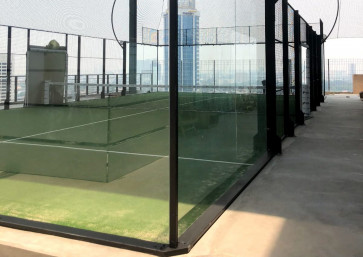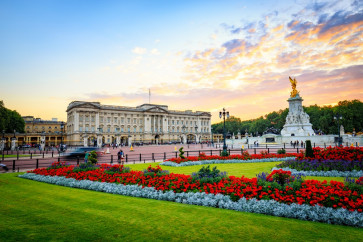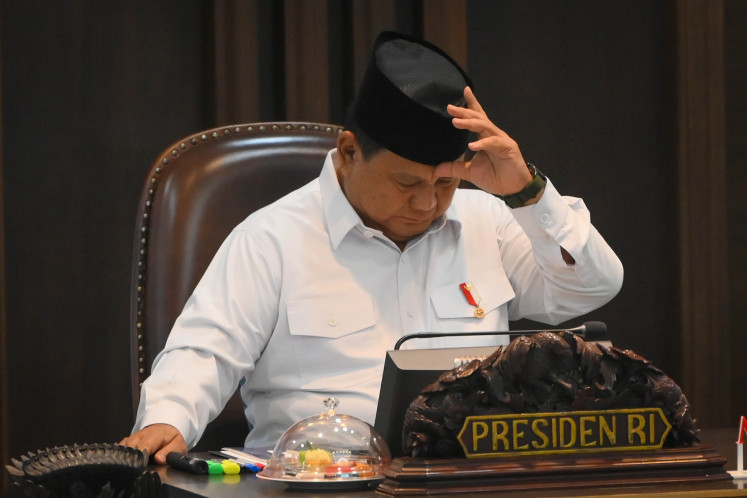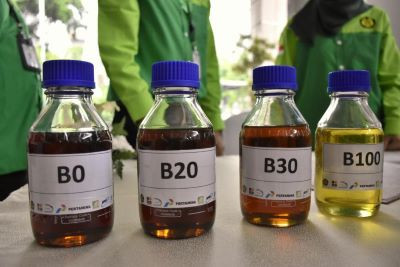Popular Reads
Top Results
Can't find what you're looking for?
View all search resultsPopular Reads
Top Results
Can't find what you're looking for?
View all search resultsBali sets the pace in Asian spa and wellness tourism
Bali has become a leader in luxury spa and wellness tourism in Asia, with almost all of Bali’s top hotels offering world-class spa facilities, a recent report shows
Change text size
Gift Premium Articles
to Anyone
B
ali has become a leader in luxury spa and wellness tourism in Asia, with almost all of Bali’s top hotels offering world-class spa facilities, a recent report shows.
The report, titled “Global Spa Summit, Wellness Tourism and Medical Tourism: Where do Spas Fit?”, given at the fifth Global Spa Summit in Nusa Dua on Wednesday, said many of Bali’s spa tourists came from Asian countries such as Japan, India, Taiwan and China.
“Bali is an attractive destination for spa and wellness tourists thanks to its skilled local therapists, abundant local ingredients for spa products and its natural landscape, with many spas offering services in unique, natural settings such as the seaside or in the jungle.”
The report compiled findings of in-depth research conducted during February and March this year in 12 countries considered to be leaders or emerging players in medical and wellness tourism.
It also recorded results of web-based surveys of spa industry leaders by collecting their insights and opinions on the opportunities and challenges presented by medical and wellness-related tourism development and interviews with leading stakeholders worldwide.
Although Bali has quickly become one of the leading spa destinations in Asia, the spa market is relatively new in Indonesia, the report said.
“In other areas in Indonesia outside Bali, spa holidays are relatively new concepts, and wellness tourism is still negligible. However, day spas are starting to grow in some larger cities such as Jakarta, Surabaya and Bandung, driven primarily by demand from urban residents who cannot afford the luxury of a spa holiday.”
The wellness sector is seeing a rapid development in Bali, evidenced by the establishment of many spas focusing on enhancing personal health and well-being.
“There are more and more detox, wellness and yoga-focused spa destinations springing up in Bali — particularly in the Ubud area — attracting many one-week vacationers from all over the globe,” spa columnist Judy Chapman wrote in the 2011 Global Spa and Wellness Industry Briefing Papers.
“Indeed, Bali seems to be becoming the yoga capital of the world,” she wrote in the papers that were available during the summit.
“The affordable, good-quality massage places still attract a stronger following, perhaps more than ever, as the consumer becomes more savvy about good-quality massages, like good-quality food.”
Other trends in Bali are more spas offering kid and family treatments and more hotels and resorts investing more into dedicated pedicure and manicure bars, Judy said.
“Overseas investors seem to be investing in wellness, detox and yoga retreat-style spas. Inside hotels and resorts, more energy is now given to additional wellness facilities like fitness, yoga, wellness cafés and kid’s spa areas.”
Overall, many hotels and resorts in Bali are not only targeting foreigners but also domestic markets, particularly wealthy Jakartans,
said Judy.
Regarding customers’ behaviors, she said, “Russians are always requesting ‘what’s new’ or ‘what else’, as they will come to a spa daily and exhaust the menu pretty quickly, while Australians still only take one or two treatments during their vacation. The local high-end Jakarta market can tell a good quality massage from the average.”
Body massages and scrubs using traditional ingredients remain the most preferable treatments for customers in Bali, said Lulu S. Widjaja, chairwoman of the Bali Spa and Wellness Association.
“There are spas offering ingredients like wine and caviar, but foreign customers prefer Indonesian traditional treatments that are not available in their home countries,” Lulu said.
There are 130 companies registered as association members including spa operators, training centers and product suppliers, but more than 1,000 businesses claim to be “spa” businesses.










